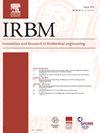Multi-Task Hierarchical Model of Medical Images Based on Alternate Interaction
IF 4.2
4区 医学
Q1 ENGINEERING, BIOMEDICAL
引用次数: 0
Abstract
In the field of medical image segmentation and classification, deep learning models can automatically extract features and perform high-performance inference, thus aiding physicians in efficient and accurate automated decision support. However, these models are typically trained for a single task, leading to limitations such as neglect of task relevance and poor scalability. To address these issues, we propose a novel Alternating Multi-Task Hierarchical Network (AMTH-Net) for medical image segmentation and classification. This model is divided into three hierarchical modules: Pathology Region Clarity (PRC) as an auxiliary module to enhance the capabilities of segmentation and classification, Multi-Resolution Attention (MRA) segmentation module that uses deep supervision to focus on image information at various resolution levels to improve segmentation accuracy, and Cascaded Multi-Scale Information (CMSI) classification module which employs a cascaded multi-scale mechanism to gradually integrate discrete information from different network layers, thereby enhancing classification performance. Additionally, we introduce a novel Alternating Interaction Loss (AI-Loss) based on Multi-Gradient Information Feedback (MGIF) algorithm to further enhance the model's segmentation and diagnostic performance. Our experiments on the COVID CXR and F BUSI Breast Ultrasound datasets show that AMTH-Net achieves superior performance in both segmentation and classification tasks. Specifically, on the COVID chest X-ray (COVID CXR) dataset, the Dice coefficient of AMTH-Net reaches 98.33%, the Intersection over Union (IOU) is 96.31%, and the accuracy rate is 91.49%, outperforming existing methods in terms of performance. On the F BUSI dataset, its Dice coefficient is 96.76%, the Intersection over Union (IOU) is 95.92%, and the accuracy rate is 95.87%, surpassing other methods once again. These results confirm the effectiveness and superiority of the model we proposed.

基于交替交互的医学图像多任务分层模型
在医学图像分割和分类领域,深度学习模型可以自动提取特征并进行高性能推理,从而帮助医生进行高效、准确的自动化决策支持。然而,这些模型通常是针对单个任务进行训练的,这导致了诸如忽略任务相关性和较差的可伸缩性等限制。为了解决这些问题,我们提出了一种新的用于医学图像分割和分类的交替多任务分层网络(AMTH-Net)。该模型分为三个层次模块:病理学区域清晰度(PRC)作为辅助模块,增强分割和分类能力;多分辨率关注(MRA)分割模块,利用深度监督来关注不同分辨率水平的图像信息,以提高分割精度;级联多尺度信息(CMSI)分类模块,采用级联多尺度机制,逐步整合来自不同网络层的离散信息。从而提高分类性能。此外,我们引入了一种新的基于多梯度信息反馈(MGIF)的交替交互损失(AI-Loss)算法,以进一步提高模型的分割和诊断性能。我们在COVID CXR和F BUSI乳腺超声数据集上的实验表明,AMTH-Net在分割和分类任务上都取得了优异的性能。具体而言,在COVID胸片(COVID CXR)数据集上,AMTH-Net的Dice系数达到98.33%,Intersection over Union (IOU)为96.31%,准确率为91.49%,在性能上优于现有方法。在F BUSI数据集上,其Dice系数为96.76%,Intersection over Union (IOU)为95.92%,准确率为95.87%,再次超越其他方法。这些结果证实了我们提出的模型的有效性和优越性。
本文章由计算机程序翻译,如有差异,请以英文原文为准。
求助全文
约1分钟内获得全文
求助全文
来源期刊

Irbm
ENGINEERING, BIOMEDICAL-
CiteScore
10.30
自引率
4.20%
发文量
81
审稿时长
57 days
期刊介绍:
IRBM is the journal of the AGBM (Alliance for engineering in Biology an Medicine / Alliance pour le génie biologique et médical) and the SFGBM (BioMedical Engineering French Society / Société française de génie biologique médical) and the AFIB (French Association of Biomedical Engineers / Association française des ingénieurs biomédicaux).
As a vehicle of information and knowledge in the field of biomedical technologies, IRBM is devoted to fundamental as well as clinical research. Biomedical engineering and use of new technologies are the cornerstones of IRBM, providing authors and users with the latest information. Its six issues per year propose reviews (state-of-the-art and current knowledge), original articles directed at fundamental research and articles focusing on biomedical engineering. All articles are submitted to peer reviewers acting as guarantors for IRBM''s scientific and medical content. The field covered by IRBM includes all the discipline of Biomedical engineering. Thereby, the type of papers published include those that cover the technological and methodological development in:
-Physiological and Biological Signal processing (EEG, MEG, ECG…)-
Medical Image processing-
Biomechanics-
Biomaterials-
Medical Physics-
Biophysics-
Physiological and Biological Sensors-
Information technologies in healthcare-
Disability research-
Computational physiology-
…
 求助内容:
求助内容: 应助结果提醒方式:
应助结果提醒方式:


